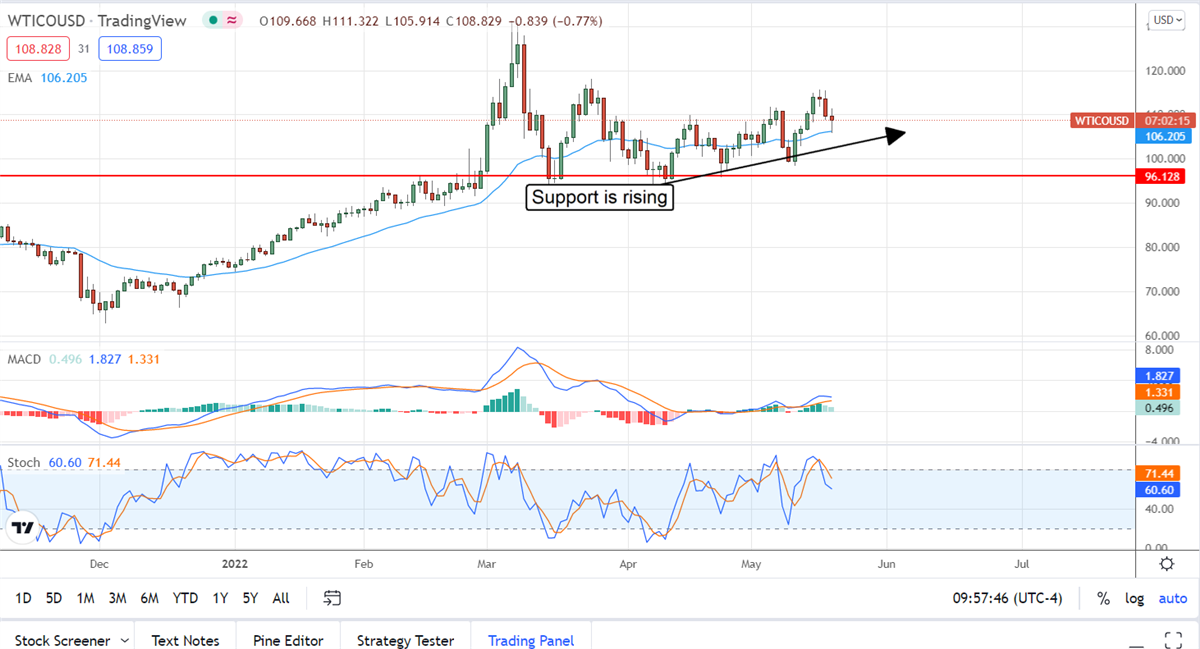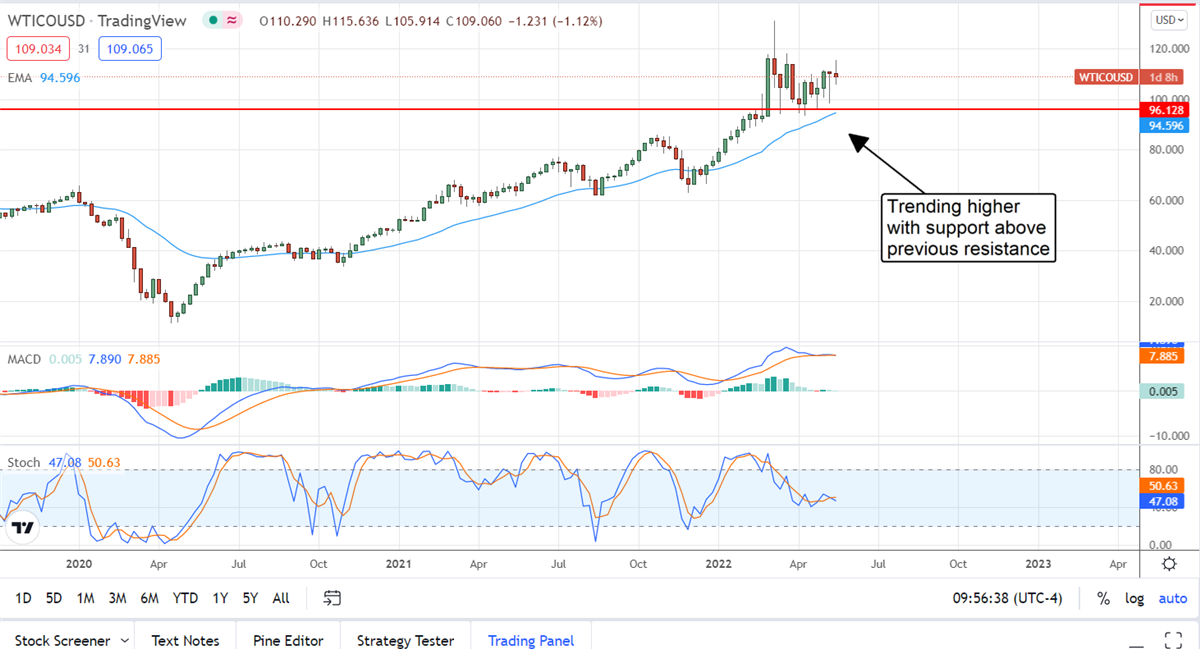Oil Stockpiles Fall Despite Fear Of Slowing Growth
The price for WTI (NYSE: USO) has been trending sideways over the past few months as traders, speculators, hedge funds, and users of oil wrestle with a rapidly changing environment. While the price action has been moving lower over the past few days, we don’t think a top has been reached in this market. Rising oil prices are having an impact on demand but systemic demand for fuel and petrochemicals remains high. A recession, if it comes, may not produce lower energy prices simply because we expect labor markets to remain tight due to the massive shortfall of available employees.
The EIA is forecasting supply and demand to run very tight over the next 6 months and there are numerous risks to the outlook. To start, the EU is not only pushing to ban imports of Russian oil and gas but Russia's claims it would sell its oil to “other” parties is without merit. If the EU follows through on the latest proposal, there will be a total ban on Russian oil in 6 months' time. At the same time, COVID restrictions in China and, more importantly, the key manufacturing hub of Shanghai, are expected to ease beginning June 1st and that will boost demand in an already tight supply/demand environment.
US Energy Stockpiles Decline
In the US, energy stockpiles are already in decline and moving lower. The latest data shows that crude and gas inventories fell again versus expectations for increases and we don’t see the trend changing. Diesel fuel and distillate stockpiles rose but not enough to make up the shortfall in the WTI data and distillate stockpiles are at the lowest level since 2005. Not even counting the demand for fuel on the road today, refinery demand to rebuild those stockpiles will be a powerful tailwind for oil prices.
Releasing the Strategic Petroleum Reserve is not helping the situation either. Total US stockpiles, including the SPR, are at 12-year lows due to the release of the SPR. The SPR itself is at the lowest level since the late 80s and will provide another tailwind to price action when it gets replenished. The takeaway is that energy reserves are well below average and in need of replenishment. Because demand is expected to match output for the foreseeable future the replenishment of stockpiles is an unlikely event.
The Technical Outlook: WTI Is Waiting To Pop
The price action in WTI has been sideways over the past few months but the bias is definitely upward. Not only has WTI confirmed support above the previous high but support is moving higher and new highs were recently set within the range. The indicators are also bullish showing a series of small but strengthening MACD peaks and higher lows in the stochastic. Price action may fall in the near term due to easing fears or fear of slacking demand but these pullbacks should be viewed as buying opportunities at this time. It is our opinion that energy markets are tight and traders are waiting for the next bad headline to cross the wire.

The weekly chart is equally biased and to the upside. While price action pulled back from the March peak it found support above $97 and has since built a nice base. The indicators also pulled back which is evidence of a cooling market but that is consistent with consolidation within a bull market. The indicators at this level have already rolled over into bullish crossovers that, at the very least, confirm support at the previous high. At best, the bullish crossovers in WTI are trend following signals that will have price action back to the all-time high fairly soon.

Need to stretch out your 401K or Roth IRA plan? Use these time-tested investing strategies to grow the monthly retirement income that your stock portfolio generates.
Get This Free Report
Like this article? Share it with a colleague.
Link copied to clipboard.